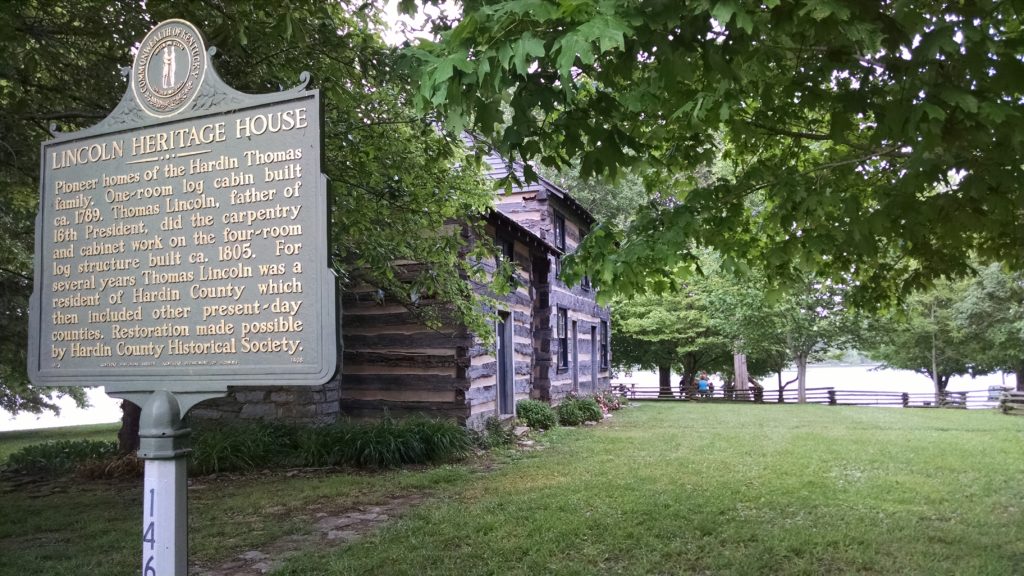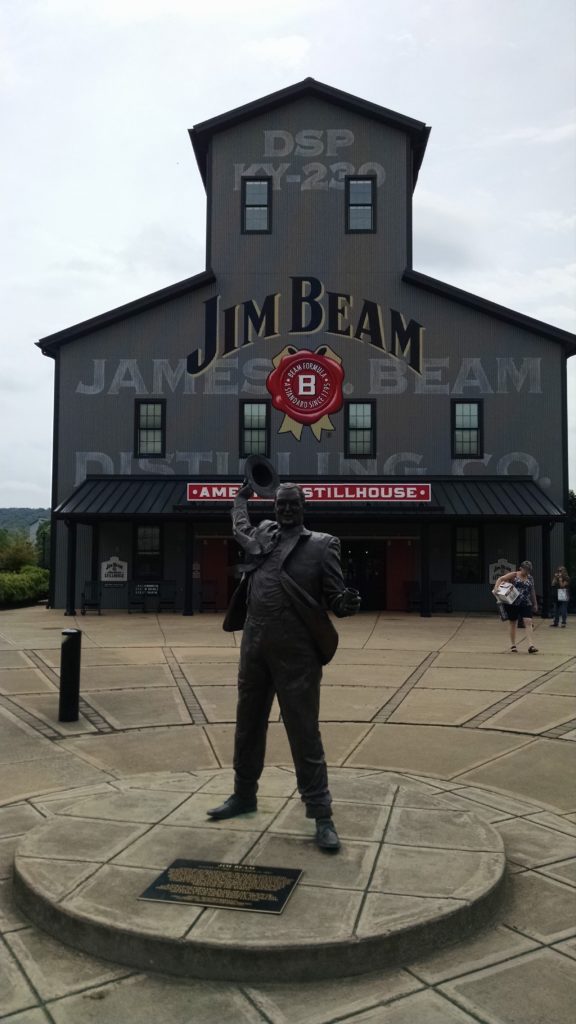
I headed out from Louisville to take on some of the Kentucky Bourbon Trail, and wound up getting a bit lost, which turned out to be the theme of the day. I should note here that I have been on two previous tours of the area that took in Bardstown, Gethsemani, and Maker’s Mark Distillery, often in a kind of saints and sinners approach. Bardstown has a number of important Catholic sites because it was where the first diocese was carved out of the frontier off of New Orleans, which is why the county was named for the French royal family, the Bourbons. In addition to establishing the initial church that was then split into a number of other dioceses across the Midwest, it also produced a type of grain alcohol that was named for the county. It is my understanding that, like Champagne, only products made in the county (perhaps in its original borders which now encompass other counties) are allowed to be labelled as bourbon. For that reason, Jack Daniels is a Tennessee whiskey, while Jim Beam produces bourbon. My first stop was to the Jim Beam American Stillhouse in Clermont, which I had never visited before. Because I have toured other bourbon distilleries, and never really enjoy the learning about the process, I went straight for the store. I had struck out on both attempts so far to buy locally produced wine, so I opted to buy some classic Beam and an apple variety that would later be a huge hit with guests to my home. (I would be remiss if I failed to note that the store clerk suggested that I serve it with cranberry juice and possibly cinnamon, but my guests and I have largely enjoyed it neat.) Because I had skipped breakfast, Tamu joined me on the grounds for lunch, which was an interesting regional take on nachos that used pulled pork in a bourbon sauce, and then for dessert, Graeter’s Bourbon Ball ice cream. After five years living in Cincinnati, I thought I had established my favorite Graeter’s flavors, but this may have surpassed the others. They have managed to perfectly capture the flavor of bourbon in the ice cream with Graeter’s signature chocolate chunks. As an aside, the woman who presided over the ice cream there acted more like a sommelier, urging tastings and suggesting food for pairing with the various samples. She admitted to me that she gained 35 pounds when they added the Graeters so she had to quit it cold turkey. At that point, she had been clean for two years, but she was not shy about pushing it on others. Just as I had developed a new taste for bourbon after years of hating it, I had thoroughly enjoyed my visit to the Beam establishment. But there was more to see, so I pressed on.
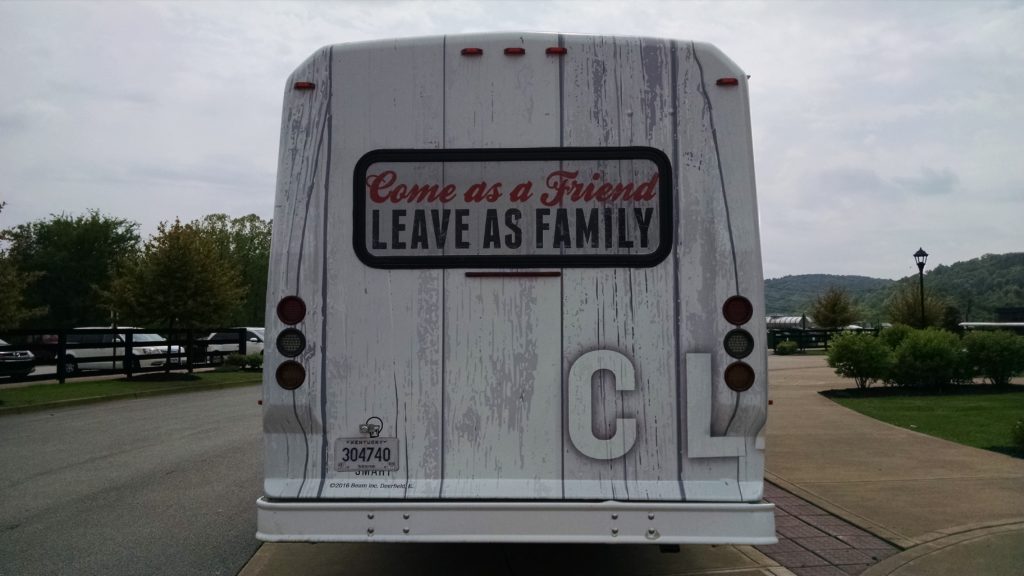
I got to Bardstown planning to take in some church-related historic sites that I had already visited. However, there had been a large accident on the Bluegrass Parkway and traffic was jammed up in Bardstown. It’s not a big place to begin with, but when I discovered that I had passed my destination and would have to turn around and re-navigate a 45 minute logjam, I decided to keep moving out to the Abbey of Gethsemani.
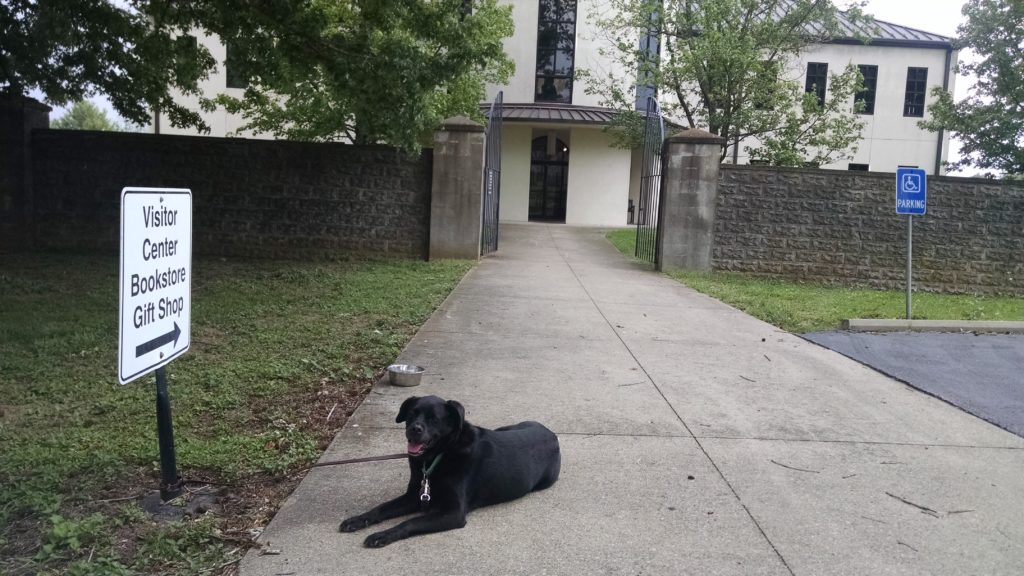
Gethsemani is known to the wider world as the place where Thomas Merton (known in the Cistercian community and buried at Gethsemani as Fr. Louis) lived his contemplative life and wrote his very popular books on spirituality. However, that does not do the place justice, as it has produced other writers since Merton’s death in 1968, and its retreats–highly popular among non-Catholics as well as Catholics–are booked up well in advance. The monks also sell varieties of their own fudges and fruitcake soaked in bourbon that are delicious. When one visits, it is the peace of the place and the silent gentleness of the monks that is most palpable. I had been here twice before, and both times were a balm to my soul. On this day, with a travel plan and the dog in tow, I decided not to attend any of the prayers or Mass, but went to the bookstore instead. I came away with fudge for my work colleagues. Tamu had behaved so nicely while he was tied up outside that I took him for an off-leash walk on the grounds surrounding the monastery and we took in the view.
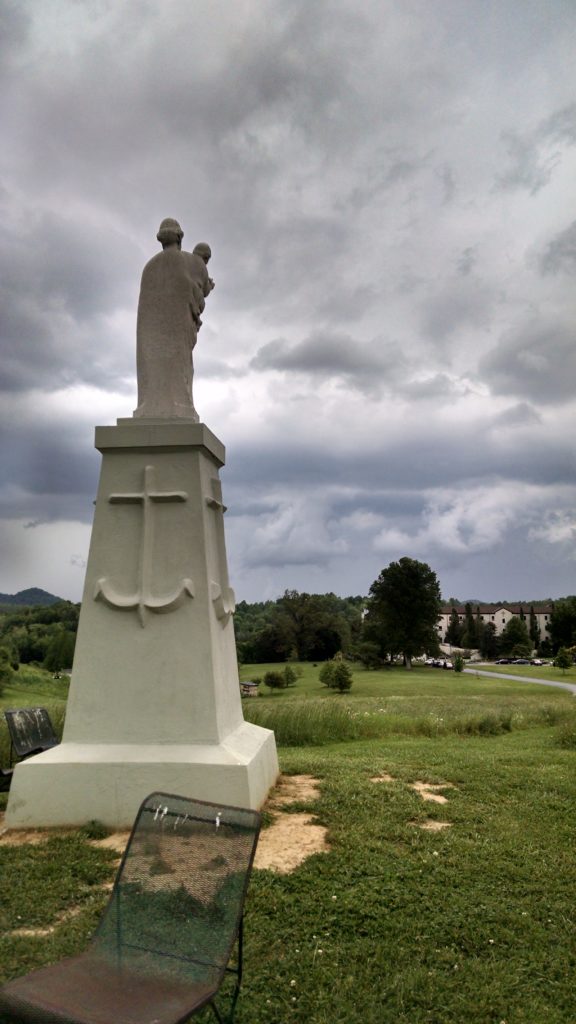
I pressed on from there to Hodgesville, the town where Abraham Lincoln was born, stopping first at a replica of his boyhood home that is part of the Abraham Lincoln Birthplace National Historic Park. His family lived at the boyhood home until Lincoln was about seven, when the family moved on to Indiana. A childhood friend built the replica cabin–which the family had rented–sometime after they moved on to Indiana. The site includes a tavern, but neither building was open for visiting. So I headed into Hodgesville, where Lincoln presides over the town square, a smaller, less majestic version of the statue that looms over the National Mall in Washington, DC.


From there I headed to the birthplace itself, but my navigation device misdirected me and I arrived five minutes after they had closed it for the day, which was an hour earlier than stated in my guidebook. This was a disappointment, as I was heading further south to spend the night and could not easily return. So far, the day had been full of bad directions and false starts, something that can happen when traveling off season in less well trafficked tourist destinations. When I visited Indiana, I had a hard time finding a guide book at all. Most times, one closed attraction or another is not that big of a deal, but in this case, I was pretty disappointed.
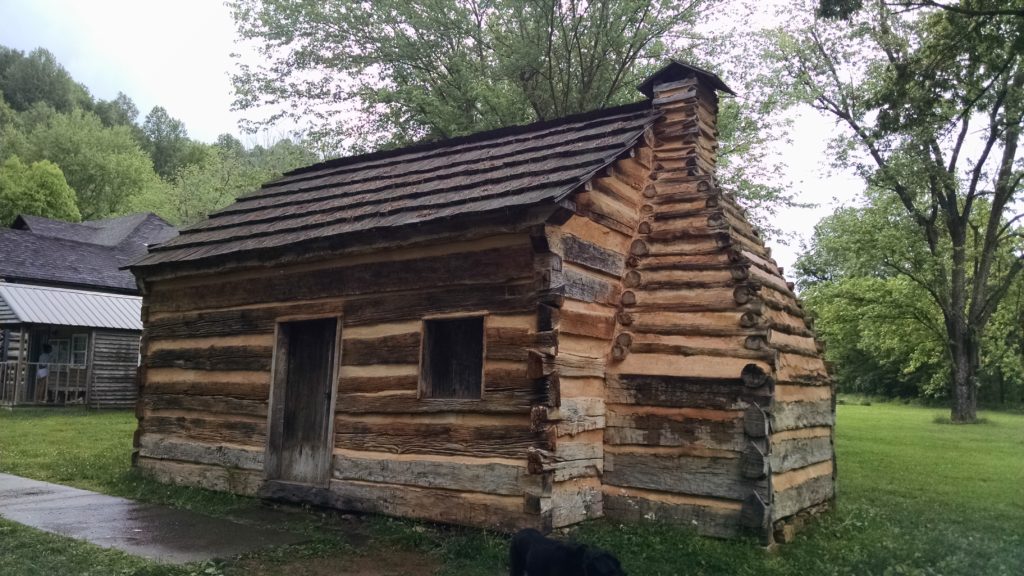
I headed to Elizabethtown, and could not find the tourist office, so I wandered the town square reading historical markers. Abraham’s parents had lived there before he was born, and then his father moved back after the death of his mother and married a local widow with children of her own. General George Custer also lived there before he went west. It is a charming town containing a marker for a local who died in the settlement of the Maumee.
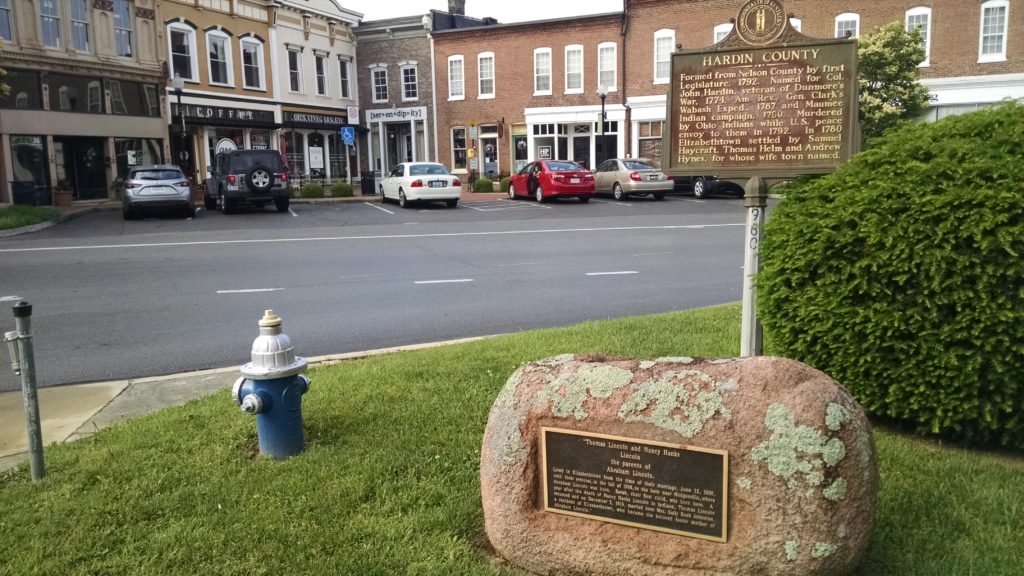
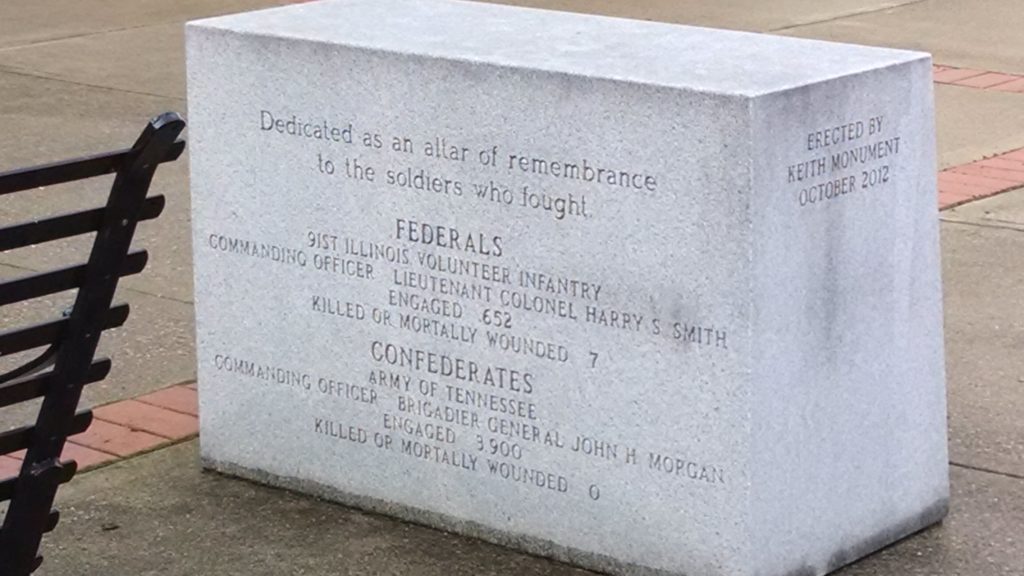
The town itself was settling down for the night, so Tamu and I made our way to the Freeman Lake Park on the outskirts, which contains a number of historic buildings and gorgeous walking land. After his second marriage, Lincoln’s father owned a cabin now located there, where his step mother encouraged the future president in his reading habit. The various park buildings were closed, but the scenery at Freeman Lake was gorgeous. Tamu and I indulged in another off-leash walk to take in the grave of an 1812 War veteran and a historic schoolhouse on the property, as well as the lake itself. It had been a mixed day of near misses and great finds. I planned to begin my day at Kentucky’s most popular tourist attraction the next morning, so we headed up the road and, sadly, left Lincoln behind.
